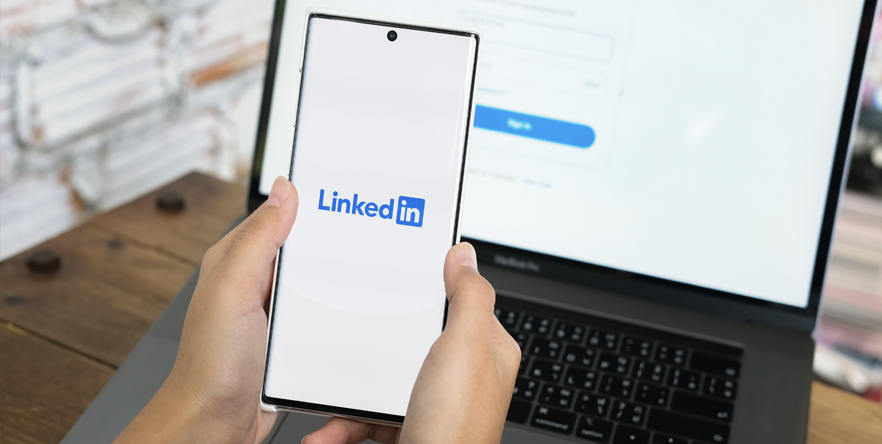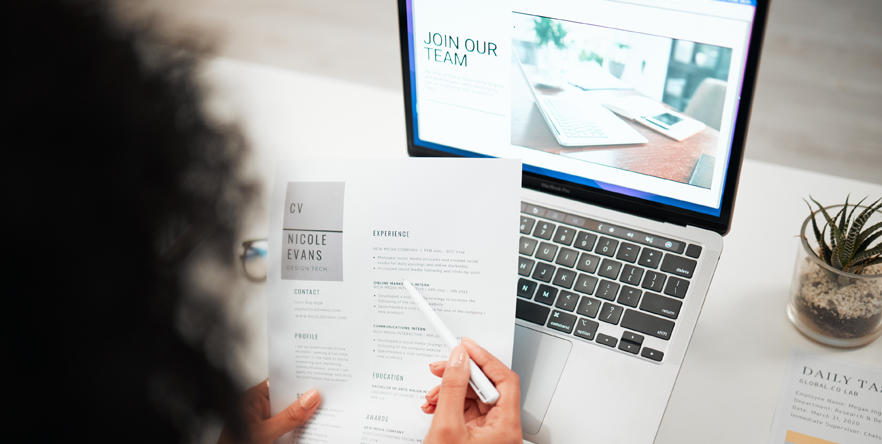Your Handy Guide to CVs, Interviews & Getting Hired

Linkedin Home Become a Founding Partner Apply for an Internship Become a community partner Resources Contact Finding a job can feel tough, especially if you didn’t go to uni, have limited work experience, or haven’t got connections in the right places. This guide is made just for you to level the playing field. You’ve got potential, and this toolkit will help you show it. With the help of Elevate 1000 we’ll not only ensure you feel confident and empowered but make sure you have access to the tools you need. Building a CV That Gets Noticed What’s a CV? A CV (Curriculum Vitae) is a document that shows who you are, what skills you have, and what you’ve done—like jobs, education, or volunteering. Basic CV Layout (One A4 page is ideal) Contact Details Name Phone number Email (use a professional one, e.g. johnsmith123@gmail.com) Address (just your town is fine) Personal Statement A short paragraph (3–4 lines) about who you are, what you’re looking for, and what you bring. Example: “I’m a motivated and hardworking individual with experience in retail and customer service. I enjoy working with people and am looking to develop my skills in a fast-paced environment. I’m keen to contribute to a team and learn new things.” Skills Tailor this to the job. Use bullet points. Good with people Reliable and punctual Basic computer skills Fast learner Team player Experience (Paid or unpaid—both count!) Job Title – Place – Dates (e.g. June 2022 – Dec 2023) One or two lines on what you did Example: Shop Assistant – Local Charity Shop – Jan 2023 – Present Helped customers, sorted stock, and managed the till Worked as part of a small team Education/Qualifications GCSEs, BTECs, A-Levels, Functional Skills etc. Mention if you’re currently studying something too Extras (if space allows) Volunteering Languages Hobbies (only if relevant and keep it professional!) Tips for Strong CVs Use a simple, clean layout—no fancy fonts or photos Avoid spelling errors—use spell check or ask someone to read it Save as a PDF to keep the layout neat Tailor it to the job (don’t send the same one everywhere!) Interview Tips That Work Before the Interview Research the Company Check their website or social media Know what they do and what values they have Know the Role Read the job advert carefully Think about how your skills match Practice Answers Common questions include: “Tell me about yourself” “Why do you want to work here?” “Give an example of working in a team” Use the STAR method to answer: Situation – Task – Action – Result (What happened? What did you do? What was the outcome?) Plan Your Journey Arrive 10-15 minutes early Know where it is and how to get there (ask for help if you need it!) What to Wear You don’t need expensive clothes—just look clean and tidy. Plain shirt or smart top Trousers or skirt Avoid jeans with rips or slogans on T-shirts During the Interview Smile and say hello when you arrive Sit up straight and make as much eye contact as you can Take your time answering—it’s okay to think Be honest about your experience and show your willingness to learn Ask a question at the end (e.g. “What’s a typical day like here?” or “What do people enjoy about working here?”) Most importantly, be yourself! Dealing with Nerves Practice with a friend or record yourself Take deep breaths Remember: they invited you—they already see potential! Challenges & How to Beat Them “I don’t have any work experience” You might have more experience than you think! Volunteering Helping at a family business Looking after siblings (shows responsibility!) School projects or part-time jobs Use these to show your skills: teamwork, problem-solving, reliability. “I don’t know how to write a CV” Try free templates from: National Careers Service Canva CV templates Local youth/job centres – many offer 1-to-1 support “I don’t know anyone in the industry” Join local job fairs, workshops or online events Try LinkedIn – start with a free profile Reach out to people in roles you’re interested in and ask for advice Charities like The Prince’s Trust or Kickstart schemes can help Extra Support & Free Resources (UK) Jobcentre Plus – Universal Credit claimants can get help finding work The Prince’s Trust – Offers free courses and mentors Youth Employment UK – Advice and jobs for young people National Careers Service – Free CV, job and training help Local Libraries – Often run free CV/interview sessions Final Words You can do this. Your background doesn’t define your future. Be proud of your story, keep learning, and don’t give up. Every step you take matters, and this toolkit is here whenever you need it. Good luck! BACK © Precedent GroupAll Rights Reserved. Linkedin Home About How it Works Resources Contact Home About How it Works Resources Contact
A Guide to Building a LinkedIn Profile

Linkedin Home Become a Founding Partner Apply for an Internship Become a community partner Resources Contact Creating a LinkedIn profile is a great way to build your professional presence online. It helps you showcase your skills, experience, and ambitions so employers and connections can see what you have to offer. No matter your background, this guide will help you step by step. Step 1: Sign Up or Log In to LinkedIn Create an Account: If you don’t have a LinkedIn account, sign up using your email address. It’s free and easy to set up. Log In: If you already have an account, simply log in to get started. – Step 2: Add a Profile Photo Choose a clear photo where your face is visible and well-lit. You don’t need professional photography—just a simple photo where you look friendly and approachable. Wear something that makes you feel confident and comfortable. Step 3: Create a Headline Your headline is one of the first things people see on your profile. If you don’t have a job title yet, that’s okay! Focus on your skills and aspirations. Examples: Aspiring Digital Marketer | Creative Thinker | Passionate About Social Media & Branding Tech Enthusiast | Entry-Level Software Engineer | Problem-Solver & Innovator Your headline should reflect your interests and where you want to go in your career. – Step 4: Write an ‘About’ Section This is where you introduce yourself. Keep it short and focused on your strengths. What to include: A little about your background Your skills and strengths What excites you about your career path Your goals for the future Example: “I am an Elevate 1000 candidate eager to grow in the digital marketing field. I have experience in social media, content creation, and customer engagement. I am always looking to learn, improve, and make a positive impact. I look forward to connecting with professionals and exploring new career opportunities.” Your summary is your chance to tell your story in your own words—keep it authentic! – Step 5: Add Work & Volunteer Experience If you have previous jobs, internships, or volunteer work, add them here. If you don’t, include experiences like school projects, side projects, or anything where you used your skills. Example: Marketing Volunteer | Local Community Centre | Jan 2024 – Present Helped create social media posts that increased engagement Assisted in planning local events and outreach efforts Gained experience in teamwork and communication – Step 6: Add Education & Certifications Include any education, training, or certifications you have completed. If you didn’t attend university, that’s okay! Add any relevant courses, workshops, or online training. Example: Digital Marketing Basics | Free Online Course (2024) High School Diploma | Local High School (Year Completed) – Step 7: Showcase Your Skills LinkedIn allows you to list your skills so employers can see what you’re good at. Add both technical and soft skills. Examples: Technical Skills: Social Media Management, Microsoft Office, Graphic Design Soft Skills: Communication, Teamwork, Time Management Ask a mentor, teacher, or colleague to endorse your skills for credibility. – Step 8: Add Transferable Skills Even if you don’t have direct work experience, you likely have transferable skills from other areas of your life. These are skills you can use in many different jobs. Examples: Customer Service: From working in retail, volunteering, or helping in community events Leadership: From leading a school project or organising an event Problem-Solving: From handling challenges in everyday life or finding creative solutions to tasks Adaptability: From learning new skills quickly or adjusting to new environments Organisation: From managing multiple responsibilities in school, home, or work Highlighting these skills shows employers that you are capable and ready to learn! Step 9: Request Recommendations A recommendation is a short statement from someone you’ve worked with, like a mentor or former employer. If you’ve done volunteer work or a training programme, ask a supervisor to write one for you. Example: “[Your Name] is a hardworking and dedicated individual. Their ability to adapt and learn quickly makes them a valuable team member.” Step 10: Highlight Projects & Achievements If you’ve worked on any projects (school, personal, or work-related), list them here. This shows your initiative and problem-solving skills. Example: Designed a poster for a local charity event, helping attract 200+ attendees. Assisted in setting up an online store for a small business. Step 11: Join LinkedIn Groups Connect with professionals in your industry by joining LinkedIn groups. These communities can help you learn and find opportunities. Examples: Marketing Professionals UK Technology Innovators Network Step 12: Stay Active on LinkedIn Engage with content, share updates, and connect with others. You can post about your career journey or share interesting articles. Example Post Idea: “Excited to start my career in tech! Just completed an online coding course and learned so much about Python.” – Step 13: Customise Your LinkedIn URL Make your profile easier to find by personalising your LinkedIn URL (e.g., linkedin.com/in/yourname). – Step 14: Set Your Contact Information If you’re comfortable, add your email or a link to your portfolio so recruiters can reach out. Step 15: Use the ‘Open to Work’ Feature If you’re job hunting, turn on LinkedIn’s “Open to Work” feature so recruiters know you’re available. Now you’re ready to build a LinkedIn profile that reflects your skills, potential, and ambitions. Keep it updated and stay active—opportunities are waiting for you! BACK © Precedent GroupAll Rights Reserved. Linkedin Home About How it Works Resources Contact Home About How it Works Resources Contact
Rejection Resilience Toolkit: For Job Seekers

Linkedin Home Become a Founding Partner Apply for an Internship Become a community partner Resources Contact Job searching can be tough, emotionally, mentally, and even physically draining. Rejection, especially repeated rejection, can hit hard and sometimes feel personal. This toolkit is designed to help you understand why rejection might feel more intense and give you practical strategies to navigate it with resilience and self-compassion. Understanding Rejection Sensitivity What is it? “Rejection sensitivity is the tendency to feel intense emotional pain or anxiety when you perceive or experience rejection, even in subtle forms like a delayed reply or a neutral tone in an email.” Signs You Might Be Experiencing It: You replay job interview conversations or rejection emails in your mind constantly. Minor suggestions or feedback feel like personal attacks. You work extra hard to “please” in interviews, often at the expense of your authenticity. Self-doubt creeps in—wondering if you’re ever “good enough.” Why It Happens: Early Life Experiences: Conditional acceptance in childhood or previous trauma. Past Rejections: Bullying, neglect, or even repeated job denials can build emotional scars. Neurological Sensitivities: ADHD and similar conditions can heighten the emotional response to rejection. Tools for Coping & Building Resilience Mindfulness Check-Ins What it is: A short, daily practice to reconnect with yourself. Try this: Set a timer for 10 minutes. Sit quietly and focus on your breath. When rejection thoughts arise, notice them—but don’t judge them. Let them float by like clouds. Why it helps: It reduces emotional overreaction and brings you back to the present moment. Reframe the Narrative What it is: Changing how you interpret rejection. Instead of: “They didn’t hire me, I must not be good enough.” Try: “That role wasn’t the right fit—there’s one out there that is.” Why it helps: It shifts your mindset from self-blame to realistic optimism. Self-Compassion Statements What it is: Being kinder to yourself, especially after receiving a rejection email. Use phrases like: “This is hard, but I’m doing my best.” “Rejection happens to everyone—it’s not a reflection of my worth.” “My value isn’t defined by this one outcome.” Why it helps: Silences your inner critic and helps you bounce back quicker. Seek Support Who can help: Friends or mentors you trust. Career coaches who can give constructive feedback. Therapists if you find the emotional toll is affecting your mental well-being. Why it helps: You’re not meant to navigate this alone. Getting an outside perspective can ease self-doubt and help you process emotions in a healthier way. Rejection Reflection Sheet Use this quick template after each rejection: Questions Your Notes What feedback (if any) was provided? What can I learn from this experience? What went well in the process? What strengths did I demonstrate? What will I try differently next time? Why it helps: Encourages growth without harsh self-judgment. Final Reminders Rejection is part of the journey, not the end of it. You are not alone in this experience. Every “no” is bringing you closer to the right “yes.” Your worth isn’t defined by a job offer, a recruiter’s reply, or an interview result. “Your worth is determined by you, and with no need for an explanation to anyone.” – Wayne Dyer BACK © Precedent GroupAll Rights Reserved. Linkedin Home About How it Works Resources Contact Home About How it Works Resources Contact
Building Your CV With Confidence

Linkedin Home Become a Founding Partner Apply for an Internship Become a community partner Resources Contact Build a CV That Shows What You Can Do Need help turning a blank page into a confident CV? You’re in the right place. This toolkit is your step-by-step guide to creating a CV that’s not only honest and clear but also tailored to you. Whether you’re just starting out, returning to work, or switching paths, your CV should show your value, potential, and personality. 📄 A good CV is a key to opportunity. Employers use it to decide who gets an interview, so it’s worth taking the time to get it right. This toolkit brings together trusted templates, writing tips, real-world examples, and free tools to help you: Understand what to include (and what to leave out). Highlight your experience, even if it’s not traditional. Make your CV friendly for both humans and bots. Tailor your design to fit the role. Proof, polish, and press send with confidence. – Why You Need a CV Your CV is your personal story on paper. It tells employers: Who you are What you’re good at Why you’d be a great addition to their team Even if you’ve never had a formal job, your experience still matters. Volunteering, caring for others, school projects, or community involvement all show skills that employers value. – What to Include You don’t need a perfect background, just an honest one. Here’s what to include: Must-Haves Your name and contact details Short personal summary (just 3–4 lines) Key skills (e.g. communication, teamwork, problem-solving) Experience (paid work, volunteering, community roles, or informal jobs) Education or training (courses, school, online learning) – Nice to Include Hobbies and interests (only if they show useful qualities) Languages or awards Access needs (if you’d like to share this in a cover letter) – ✅ Quick-Reference: CV Do’s Why it matters What to do Simple tips First impressions Keep it short 1 page is best if you’re early in your career. Use clear fonts like Calibri or Arial, size 11 or 12. Easy to read Use clear structure Order it like this: Contact info → Personal summary → Education → Skills → Experience → Extras Relevance Match each role Use keywords from the job ad. Move the most important points to the top. Strong impact Show achievements, not just tasks ❌ “Did social media” → ✅ “Increased Instagram followers by 35% in 4 months” Works for people & software Use plain words and standard headers Skip tables, columns, and fancy designs that confuse automated systems. Confident tone Start bullet points with power verbs Use words like “led,” “created,” “organised,” “supported” Finishing touch Proofread twice Read it out loud. Use a grammar checker. Ask someone you trust to check it. Contact ready Use a simple, professional email john.smith@gmail.com looks better than xxgamerqueenxx@hotmail.co.uk 🚫 Don’ts (Common Mistakes to Avoid) Don’t cram the page. Leave space between sections so it’s easy to scan. Don’t lie or stretch the truth. It can backfire later. Don’t list everything you’ve ever done. Only include what matters for the job. Don’t mix tenses. Past jobs = past tense. Current roles = present tense. Don’t add personal info like your photo, date of birth, or marital status. Don’t use fancy fonts, emojis, or colours. Stick with one clean font. Don’t start with “I’m seeking a challenging role…” Instead, say what value you bring. Don’t paste long links. Use short links or hyperlink your words. Don’t talk about pay or references unless asked. Don’t name your file “cvfinalNEW.docx.” Use something like: FirstName-LastName-CV-May-2025.pdf Pick a Template That Fits the Role Job Type Best Template Creative Canva, Google Docs Admin or Office National Careers Service Word Template Academic or Tech Overleaf or Word Chronological Layout First-time Jobseeker Skills-based layout with short bullets 🧰 Free Tools to Build and Improve Your CV Templates & Layouts Canva Resume Builder – Easy drag-and-drop designs (Free) Google Docs Templates – Clean layouts (Free) Word Templates – “Modern” or “Swiss” designs (Free with Microsoft Word) Overleaf LaTeX – Best for science/academic roles (Free) Feedback & Proofing Grammarly – Spelling and grammar help (Free) Hemingway Editor – Makes writing clearer (Free) Jobscan – Matches your CV to job ads (5 free scans per month) ResumeWorded – Suggests changes to language and keywords (1 free scan per week) People to Help You National Careers Service – Free phone advice and templates Manchester Work Clubs – In-person CV help and job support LinkedIn Resume Builder – Creates a CV from your profile 📝 How to Use This Toolkit Choose a template Write a rough first draft Run it through 1–2 feedback tools (Jobscan, Grammarly, etc.) Edit and clean it up Ask someone to read it over Save it as a PDF Apply with confidence – CV Example One (1) Jane SmithManchester, UK📧 jane.smith@email.com | 📞 07900 123456🔗 linkedin.com/in/janesmith Personal Statement Creative and organised individual with strong communication and teamwork skills. Passionate about inclusive storytelling and digital content creation. Looking to start a career in communications where I can support projects that make a social impact. Key Skills Clear and engaging written communication Social media content creation (Instagram, Canva, TikTok) Team collaboration and meeting deadlines Community outreach and event support Basic design and layout using Canva Organisation and time management Education & Training Digital Marketing Short Course – Google Digital Garage (2024)Topics included SEO basics, social media strategy, and content planning. BTEC Level 3 Extended Diploma in Media – Manchester College (2021–2023)Achieved: Distinction Merit Merit Experience Volunteer Social Media AssistantManchester Community Food Bank (Oct 2023 – Mar 2024) Created weekly Instagram posts using Canva to share donation needs and success stories Increased follower engagement by 40% over 5 months Wrote short blogs for the website to highlight volunteer voices Peer MentorManchester College (Sept 2022 – June 2023) Supported new students with settling in and study tips Ran drop-in sessions to answer questions and build confidence Built active listening and problem-solving skills Projects &
